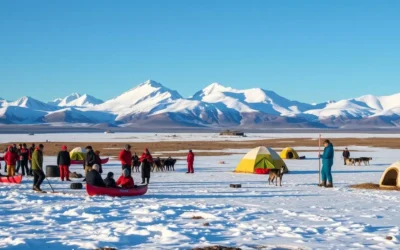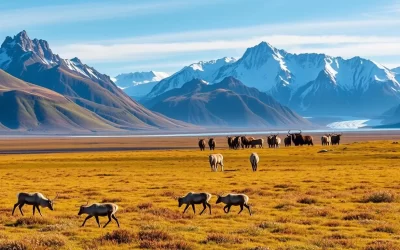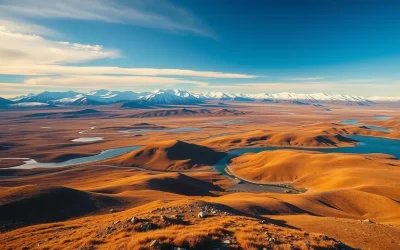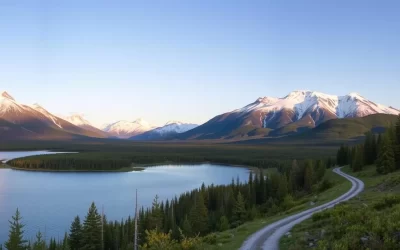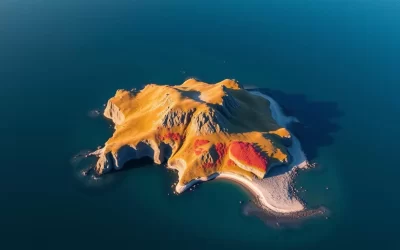Welcome to Grise Fiord, one of the most remote places you can visit in the world. Known as “the place that never thaws out” in Inuktitut, this tiny Arctic hamlet offers a unique glimpse into life at the edge of the inhabitable world.
Nestled between dramatic cliffs at the mouth of a stunning fjord on Ellesmere Island, Grise Fiord provides visitors with unparalleled opportunities to experience pristine Arctic wilderness and witness incredible wildlife like polar bears and muskoxen.
As you explore the surrounding mountains and fjords in this remote Nunavut territory, your adventure will be unforgettable. With only about 135 residents, Grise Fiord offers a wealth of experiences for adventurous travelers willing to make the journey to one of North America’s most isolated settlements.
Discovering Canada’s Northernmost Community
You’re about to explore one of the world’s most remote communities, Grise Fiord, situated in the Canadian Arctic. This tight-knit community is located on the southern shores of Ellesmere Island, at approximately 76°N latitude.
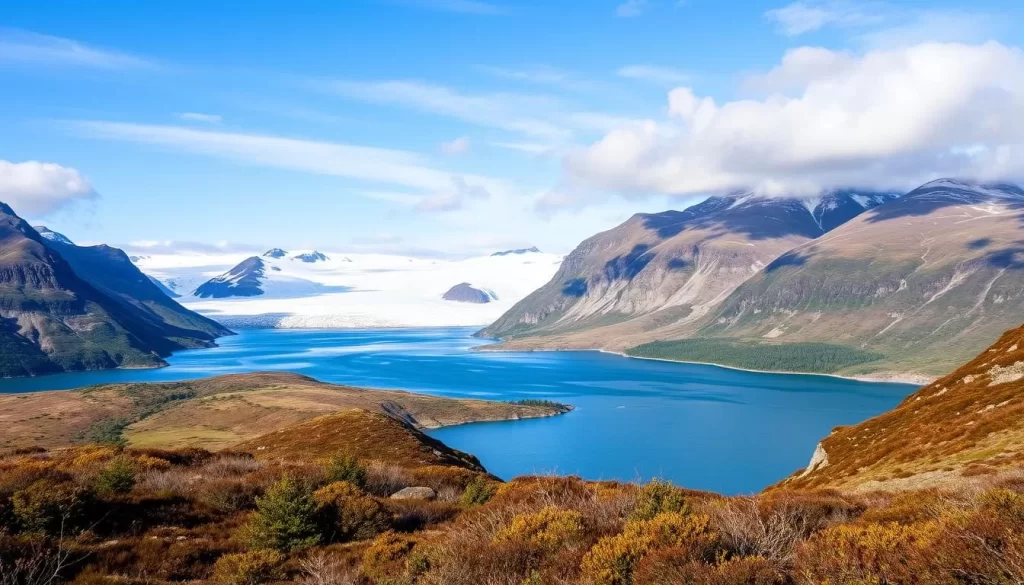
The Place That Never Thaws Out
Grise Fiord is known as “Aujuittuq,” or “the place that never thaws out,” due to its permafrost and sea ice that remains for most of the year. With temperatures often below -40°C in winter, it’s one of the most extreme environments on Earth.
The community is home to about 135 residents, who live in a landscape dominated by ice and rock. Despite the harsh conditions, Grise Fiord features essential services like a school, health center, and a Co-op store.
Getting to Grise Fiord
Reaching Grise Fiord is challenging; you can get there by plane via its functional runway or by water during the brief summer when the Northwest Passage is navigable. Cruise ships occasionally visit during this short ice-free season, offering a rare opportunity to experience this remote community.
The community relies on the annual Sealift, a cargo ship that brings essential supplies once or twice a year. This logistical challenge makes visiting Grise Fiord a unique adventure, allowing you to experience life in one of the world’s most isolated human settlements.
The Fascinating History of Grise Fiord
The fascinating history of Grise Fiord is marked by the High Arctic relocation program, a significant and controversial chapter in Canadian history. As you explore this community, you’ll discover the resilience and adaptability of its residents.
The 1950s Relocation Story
In the 1950s, during the Cold War era, the Canadian government initiated the High Arctic relocation program, relocating Inuit families from Inukjuak (northern Quebec) and Pond Inlet to Grise Fiord on Ellesmere Island. The government presented this move as an opportunity for a better life with abundant hunting. However, the reality was starkly different; the families arrived to find no housing, unfamiliar terrain, different wildlife patterns, and extreme conditions they weren’t prepared for.
These relocated families were essentially used as “human flagpoles” to assert Canadian sovereignty in the High Arctic during a time of heightened tensions over Arctic territorial claims. Despite promises that they could return home after two years if they wished, the government failed to honor this commitment, forcing the families to adapt to their harsh new environment.
| Year | Event | Impact on Inuit Families |
|---|---|---|
| 1953 & 1955 | Inuit relocation to Grise Fiord | Families faced extreme hardship and adapted to new terrain |
| 2010 | Canadian government apology | Formal acknowledgment of the hardships endured by the relocated families |
The Grise Fiord Monument
A powerful monument in Grise Fiord, carved from a granite boulder by Looty and Matthew Pijamini, commemorates this dark chapter in history. The monument depicts a distraught Inuit mother clutching her daughter, symbolizing the suffering endured by the relocated families. A plaque reads: “In memory of Inuit landed here in 1953 & 1955, and those who came after. They came to these desolate shores to pursue the Government’s promise of a more prosperous life. They endured and overcame great hardship, and dedicated their lives to Canada’s sovereignty in these lands and waters.”
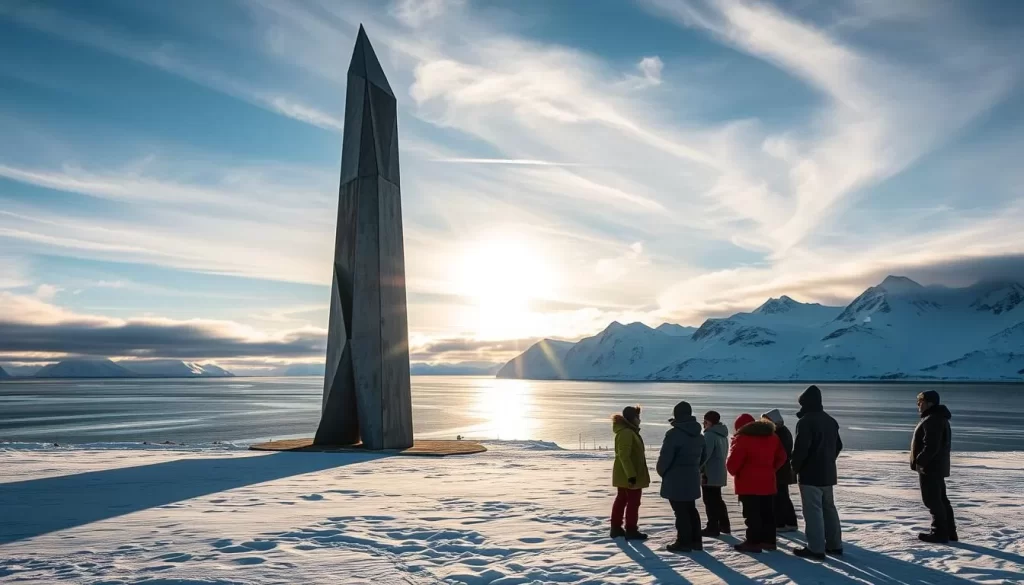
Larry Audlaluk, one of the few remaining original “exiles” who was relocated as a child, continues to share the stories of hardship and resilience that defined the early years of the settlement. Today, many residents of Grise Fiord are descendants of these original relocated families, and their history of resilience and adaptation has become a defining part of the community’s identity and life in this remote town on Ellesmere Island, making Grise Fiord a unique place to visit and experience Inuit culture.
Outdoor Adventures in the Arctic Wilderness
As you step into the Arctic wilderness around Grise Fiord, you’re immediately immersed in a world of breathtaking landscapes and unparalleled outdoor adventures. The area offers a unique blend of activities that allow you to experience the raw beauty of the Arctic environment.
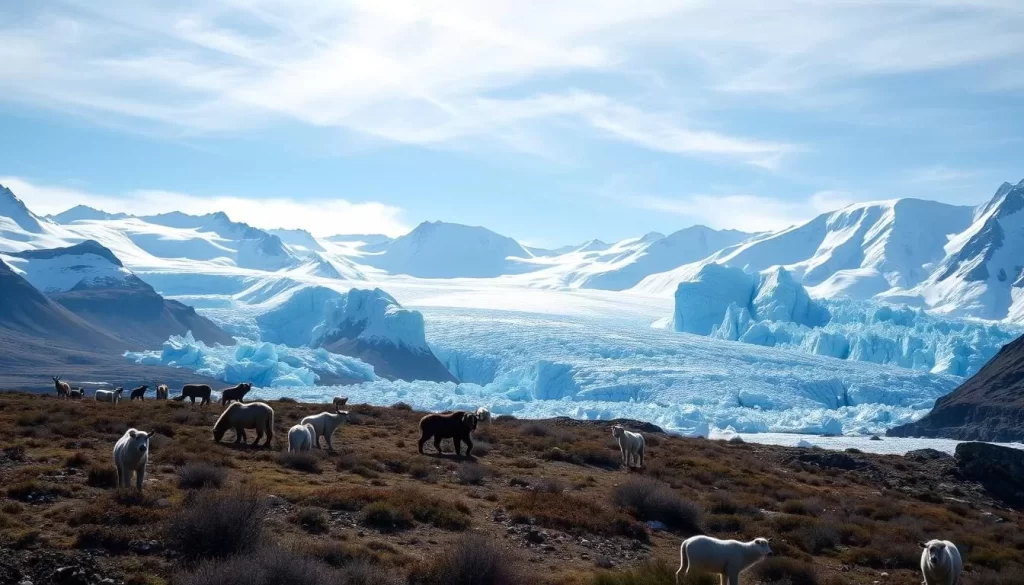
Wildlife Viewing Opportunities
The pristine wilderness surrounding Grise Fiord offers some of the most spectacular wildlife viewing opportunities in the Canadian Arctic. You can spot several iconic species that make their home in this harsh yet beautiful environment.
Polar Bears and Muskoxen
Polar bears frequently visit the area, with locals reporting that approximately a dozen bears wander near the community each year. Guided excursions with experienced local hunters provide safe opportunities to spot these magnificent predators in their natural habitat. The region is also home to muskoxen, though locals report seeing fewer in recent years.
Marine Life: Walrus and Whales
Marine wildlife viewing is exceptional in the waters around Grise Fiord. You can spot walrus, narwhal, beluga whales, and bowhead whales during the brief summer season when the ice retreats.
Hiking the Arctic Terrain
Hiking opportunities abound in the dramatic mountainous terrain surrounding Grise Fiord. Trails offer breathtaking views of glaciers, fjords, and the vast Arctic landscape. It’s essential to hike with a local guide due to the presence of predators.
Winter Activities: Dogsledding and Snowmobiling
Winter transforms Grise Fiord into a playground for cold-weather activities. Dogsledding expeditions offer an authentic way to experience traditional Inuit transportation methods while exploring the frozen landscape. Snowmobiling has largely replaced dog teams for everyday transportation but remains an exhilarating way to cover greater distances across the sea ice and snow-covered terrain.
Visiting Grise Fiord also provides a gateway to exploring other spectacular Arctic wilderness areas in Nunavut, including Auyuittuq National Park and Sirmilik National Park, showcasing the region’s unique landscapes.
Grise Fiord, Nunavut: Best Things to Do – Top Picks
When visiting Grise Fiord, Nunavut, you’ll discover a plethora of exciting activities that showcase the best of this Arctic community. Surrounded by lovely mountains, Grise Fiord offers a unique blend of traditional Inuit culture and breathtaking Arctic landscapes.
Explore the Dramatic Fjords by Boat
One of the most spectacular experiences in Grise Fiord is exploring the dramatic fjords by boat during the brief summer season when the waters are navigable. Local guides can take you through ice-filled waters where towering cliffs rise dramatically from the sea. You’ll have the chance to witness calving glaciers and floating icebergs, as well as marine wildlife including seals, walrus, and various whale species that frequent these nutrient-rich waters.

Experience Traditional Inuit Culture
Immersing yourself in traditional Inuit culture is a highlight of any visit to Grise Fiord, where ancient practices continue to thrive. You can learn about traditional hunting techniques, tool making, and survival skills from community elders. The community hall serves as a gathering place where visitors might experience traditional drum dancing, throat singing performances, or community feasts featuring local delicacies.
Visit the Community Hall and Co-op Store
Don’t miss visiting the Grise Fiord Co-op Store, which serves as the community’s lifeline. Beyond being the only grocery store, it houses the post office counter where you can mail postcards with a coveted Grise Fiord postmark. The Co-op is a hub of community activity, offering insights into the daily lives of Grise Fiord residents.
For a deeper understanding of the region’s history and culture, consider visiting the monument commemorating the 1950s relocation. Local residents sometimes share firsthand accounts of this pivotal chapter in Canadian history.
| Activity | Season | Description |
|---|---|---|
| Boat Tours | Summer | Explore fjords, witness calving glaciers, and see marine wildlife. |
| Cultural Immersion | Year-round | Learn traditional Inuit practices and participate in community events. |
| Visiting Co-op Store | Year-round | Experience community life and mail postcards. |
| Guided Hikes | Summer/Winter | Enjoy panoramic views of the settlement, fjords, and ice caps. |
Adventure seekers can arrange guided hikes in the mountains surrounding Grise Fiord, offering breathtaking panoramic views. Wildlife enthusiasts should be prepared to spot polar bears and muskoxen. During winter, experiencing traditional dogsledding or modern snowmobiling provides an authentic taste of Arctic transportation.
While in Nunavut, consider extending your Arctic adventure to explore other remarkable destinations like Auyuittuq National Park and Sirmilik National Park, or cultural hubs like Rankin Inlet and Cambridge Bay.
Practical Tips for Visiting Grise Fiord
For those eager to experience the untouched beauty of Grise Fiord, understanding the practical aspects of visiting this Arctic community is crucial. Grise Fiord is a challenging destination due to its tiny population and remote location within Nunavut, a territory with about 39,000 citizens scattered across 26 communities not linked by roads.
To ensure a smooth and enjoyable trip, consider the following practical tips.
Best Time to Visit
The best time to visit Grise Fiord is during the brief Arctic summer, from late July to early September, when temperatures are milder, averaging 0-5°C, and daylight extends for nearly 24 hours. This period offers maximum opportunity for exploration. For the truly adventurous, winter visits are possible, but be prepared for extreme cold and the polar night.
Accommodation Options
Accommodation in Grise Fiord is extremely limited, with no formal hotels available. Visitors typically stay at the community’s single guesthouse or arrange homestays with local families through advance coordination with the hamlet office. It’s essential to plan ahead due to the limited options.
What to Pack for the Arctic
When packing for Grise Fiord, prepare for all weather conditions. Essential items include waterproof and windproof outer layers, moisture-wicking base layers, insulated mid-layers, sturdy waterproof boots, and accessories like gloves, hats, and sunglasses. Even in summer, bring warm clothing, as temperatures can drop suddenly.
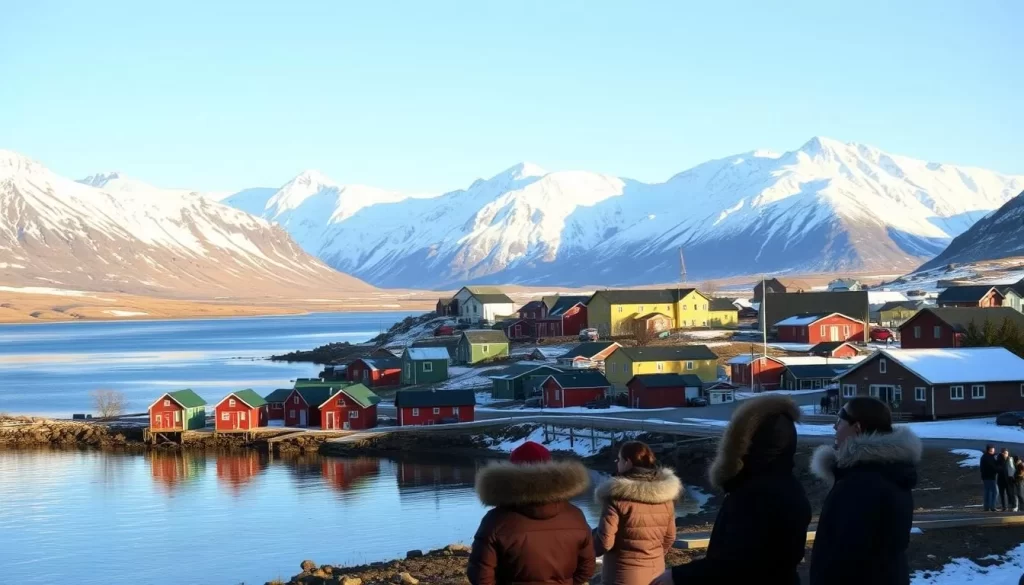
| Essential Items | Description |
|---|---|
| Waterproof Outer Layers | Protect against wind and rain |
| Moisture-wicking Base Layers | Keep you dry and comfortable |
| Insulated Mid-layers | Provide warmth in cold conditions |
Planning Your Arctic Adventure to Grise Fiord
Planning a trip to Grise Fiord requires careful consideration and a deep respect for the land and its people. To make the most of your journey, consider booking with specialized Arctic tour operators like Adventure Canada, who work directly with northern communities to create authentic experiences.
When visiting Grise Fiord, you may also want to explore other Nunavut highlights, such as Auyuittuq National Park with its spectacular glaciers, or Sirmilik National Park, which encompasses Bylot Island and the Borden Peninsula. Other destinations worth considering include Rankin Inlet, Cambridge Bay, and Qaummaarviit Territorial Park, each offering unique insights into the territory’s diverse landscapes and cultures.
Approach your Arctic adventure with an open mind and heart, respecting local customs and the tight-knit community. By doing so, you’ll contribute to sustainable tourism that benefits the people of Grise Fiord.
The above is subject to change.
Check back often to TRAVEL.COM for the latest travel tips and deals.

